Did you know that Merton has the biggest mosque in London? Baitul Futuh Mosque in Morden is also Britain’s biggest mosque, and one of the largest mosques in western Europe. It stands 23 metres tall, and can host 13,000 worshippers in its prayer halls. This post is about Baitul Futuh Mosque in Morden, and includes information about its history, location and architecture.
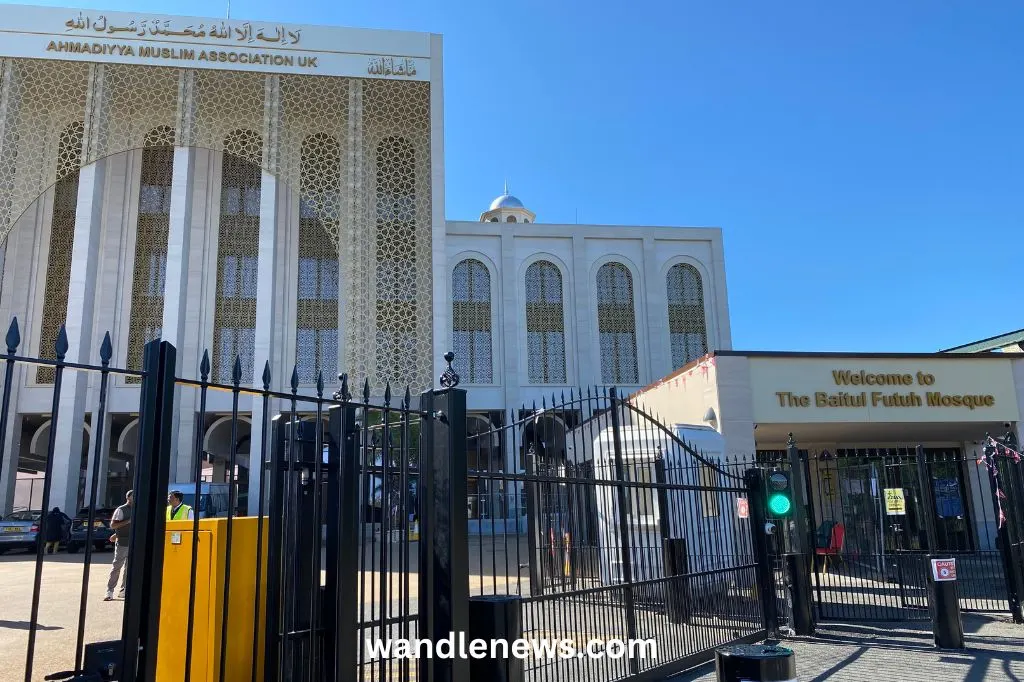
History of The Biggest Mosque in London
The idea for Baitul Futuh Mosque was conceived in the mid 1990s, to provide a larger and more modern space for the growing Ahmadiyya Muslim community in south London.
In 1996, the land from an old dairy depot was bought, after the head of the community at the time, Mirza Tahir Ahmad, had launched an appeal for funds. The foundation stone was placed in 1999, and the mosque was officially opened on 3rd October 2003.
In 2015, a fire broke out in the Baitul Futuh complex, and part of it was destroyed. A costly renovation project then took place, and a new five-storey building was built. It included two large halls, offices and guest rooms. Light coloured marble was imported from Portugal, to create 20 metre high columns at the front.
After 8 years, the mosque finally re-opened on 4th March 2023. In the photographs below, you can see the beautiful geometric design, and tall marble pillars. The name “Baitul Futuh” means House of Victories.
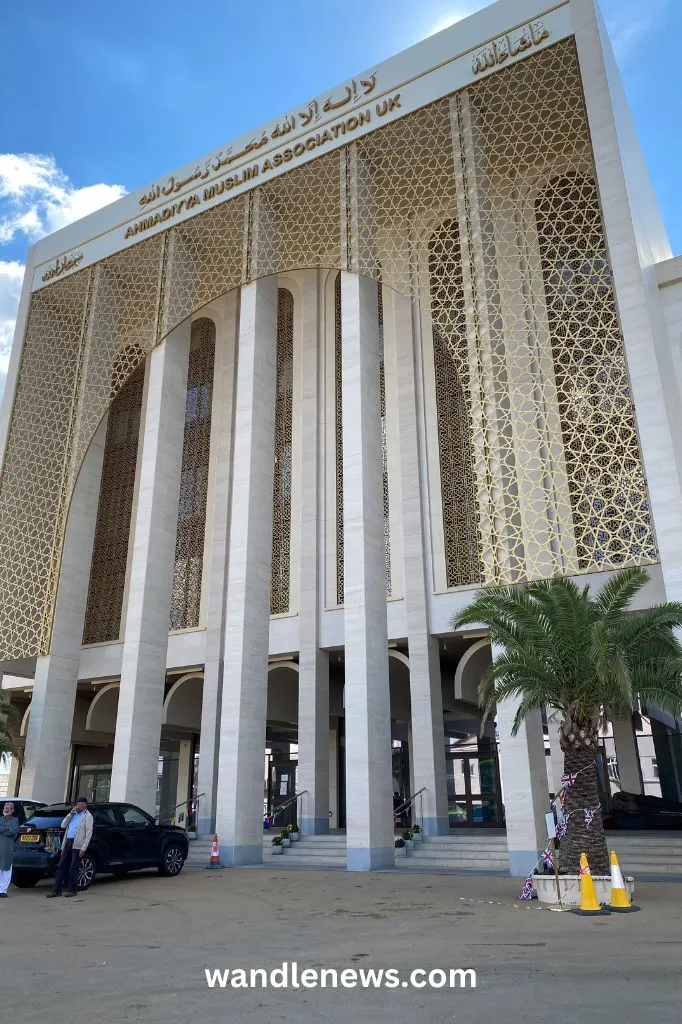
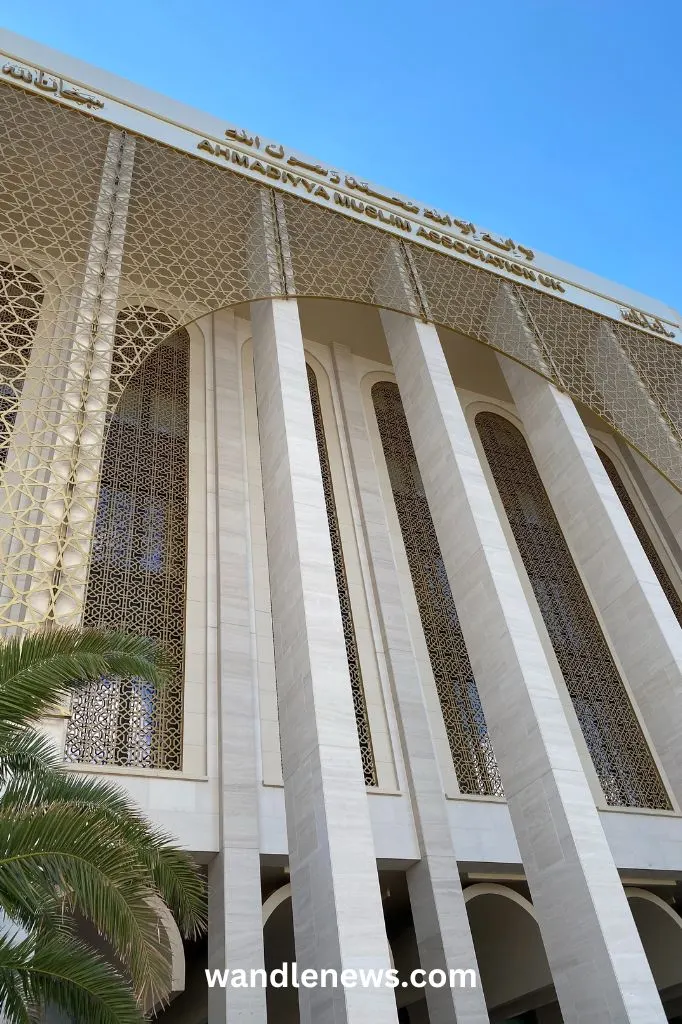
Facilities
The new complex has a range of facilities including a radio studio where the Voice of Islam broadcasts from, as well as TV studios.
The main building contains mostly administrative offices, but there are also multi-functional halls for community events, as well as guest rooms.
The site also has an Islamic bookstore, which is open to the public, a library, exhibition, canteen, wash-room facilities and prayer rooms.
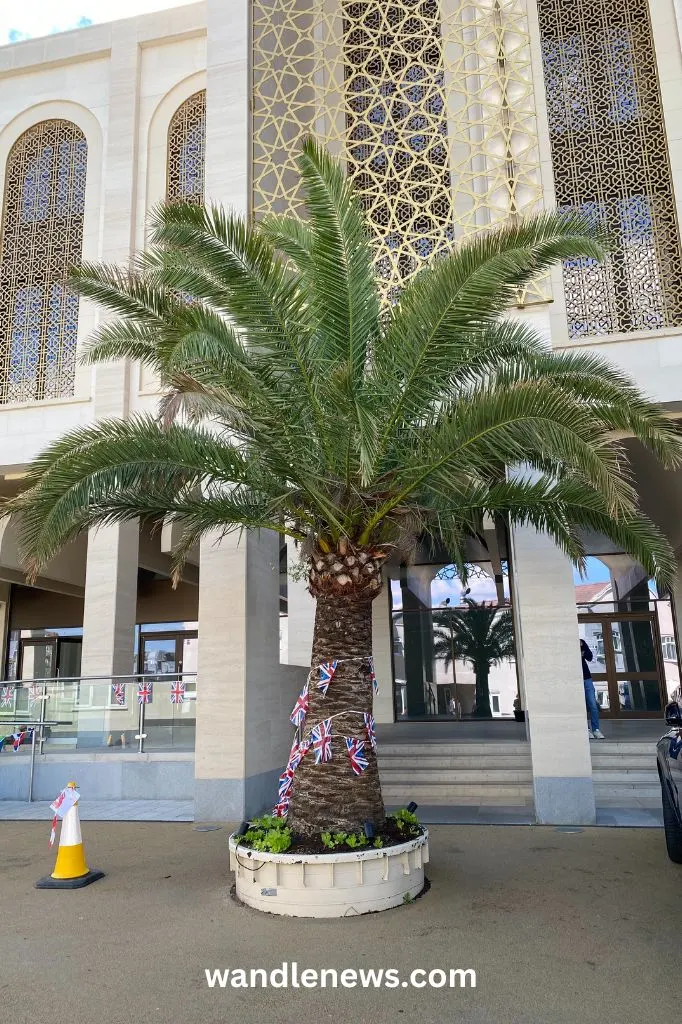

The Minaret
The mosque complex has two minarets. A minaret is a type of tower that is typically built into or next to mosques. They are usually used to project the Muslim call to prayer, but the minarets in Morden are purely decorative.
The tallest minaret at the Baitul Futuh site used to be the chimney, used by Express Dairies, back when the site was a dairy bottling plant. The mosque won an award for their imaginative repurposing of the old chimney, into a beautifully adorned minaret.
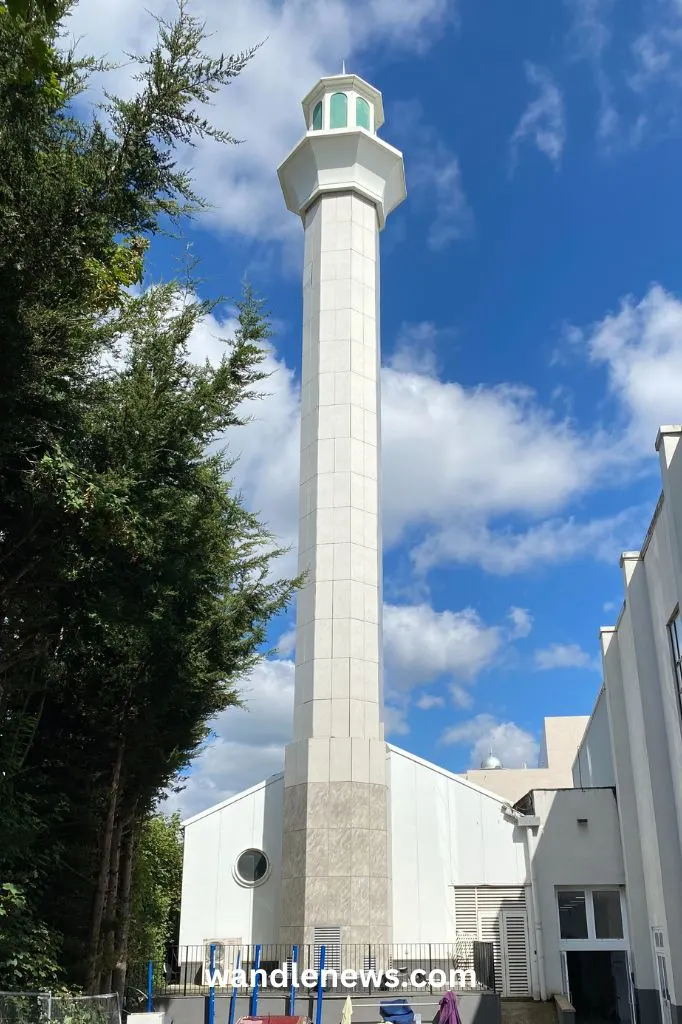
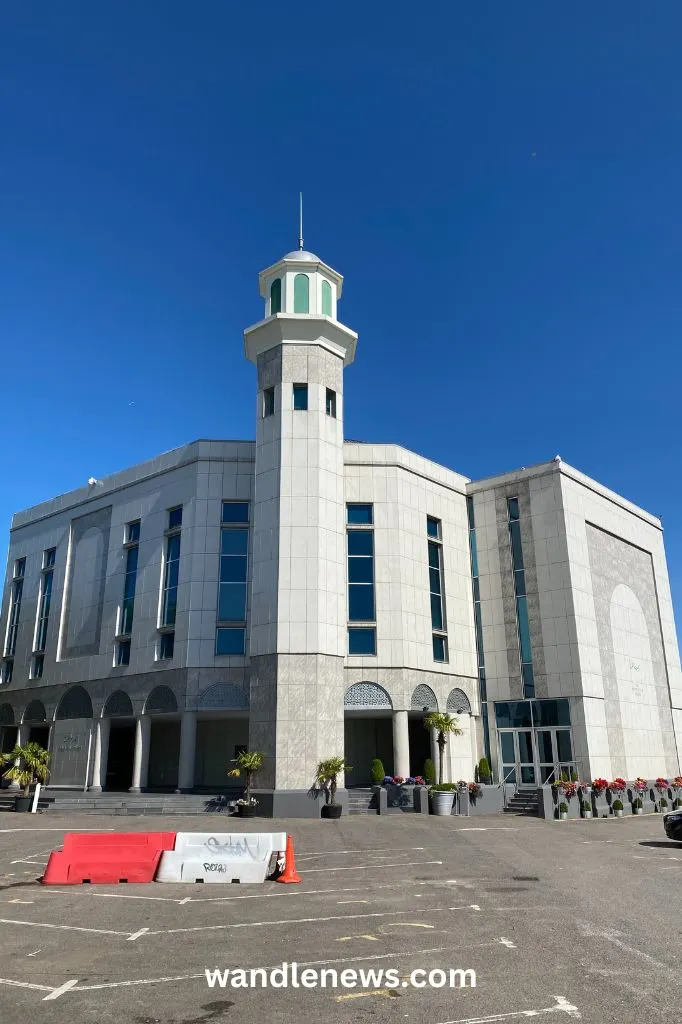
Inside the Biggest Mosque in London
When you go inside the mosque, you need to remove your shoes. In the main entrance is a clock which has all the times of the daily prayers. There are stairs and a lift going up to the men’s area, and down to the women’s area.
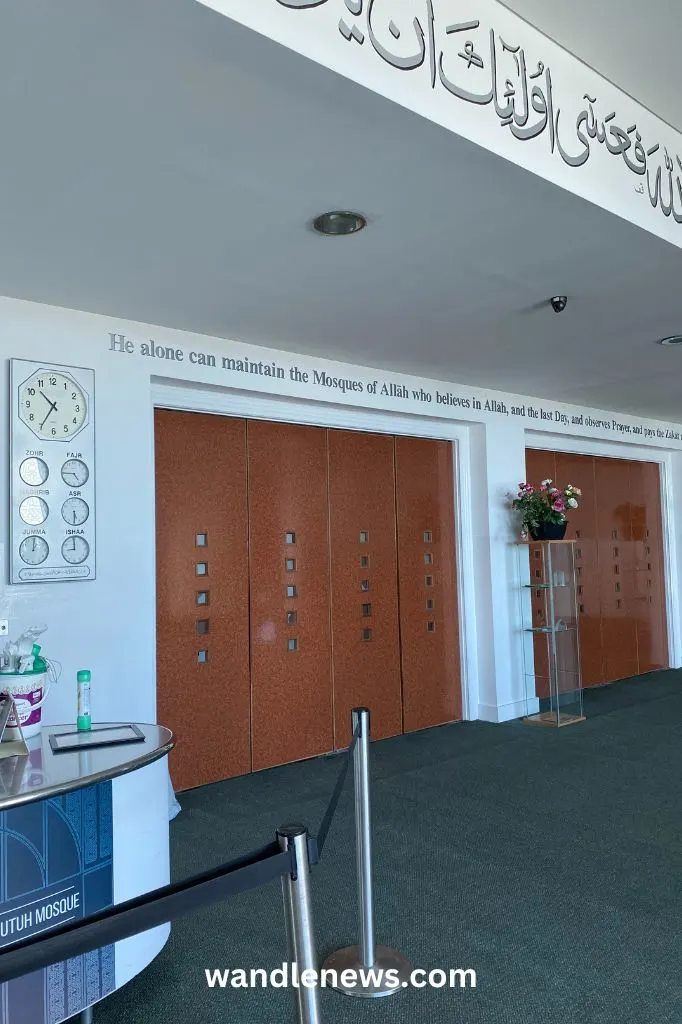

The Men’s Area
The first photograph below shows the main prayer hall, where men come for Friday prayers. The carpet is green, the walls are white, and there is minimal decoration. The green arch in the centre is where the Immam leads the prayers.

Most mosques have a dome, since in times before we had speakers and microphones, they were used to project the Immam’s voice. Today, the domes are still built out of tradition.
The dome at Baitul Futuh has Arabic writing around the edge which means “surely, in the remembrance of God do hearts find comfort“.
There are red chairs in the main prayer hall, as well as in the gallery overlooking the hall, for men who are unable to stand.
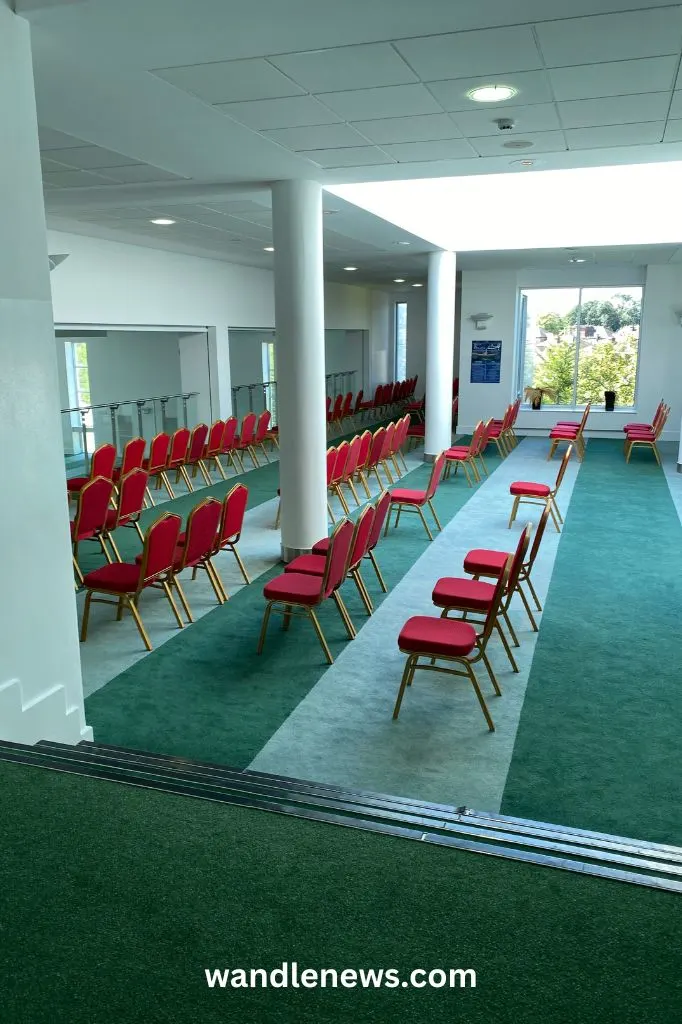
The Women’s Area
Downstairs is the women’s area. Even though it is below ground, it is still lit with natural light that comes through the upper wall.
In this section of the mosque, the prayers from the men’s section can be heard through a speaker. Sometimes woman also lead the prayers.
Just as in the men’s section, the carpet is coloured with green stripes, and the walls are white. The women’s area of the mosque is shown in the photograph below.
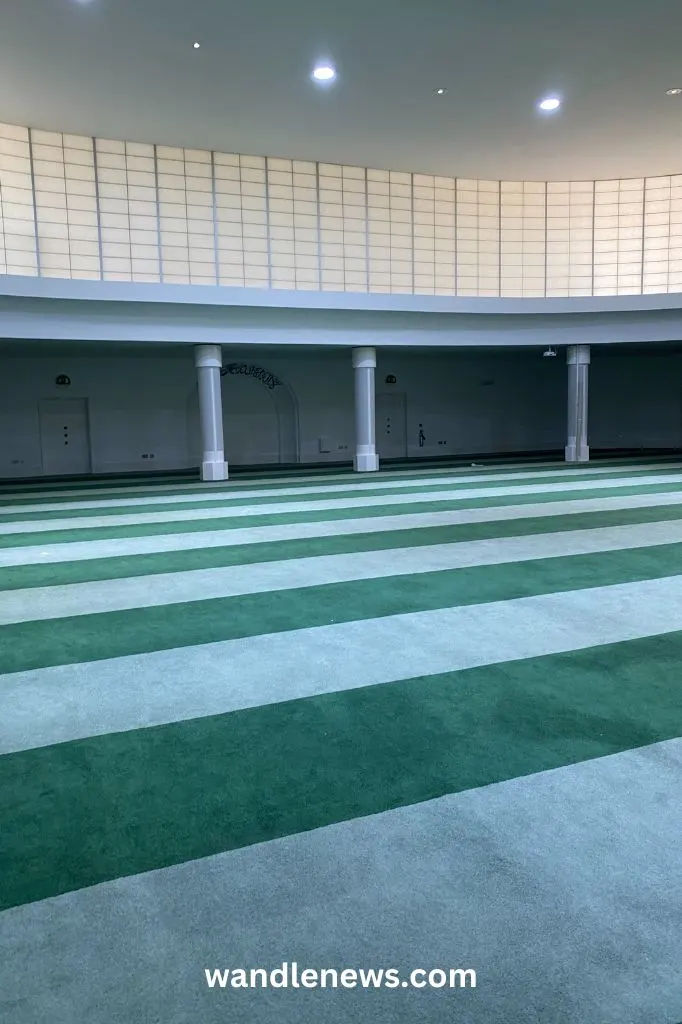
At the side of the women’s area is a sound proof creche, where women can take their children during the prayer service. There is a sound proof glass screen between the two areas.
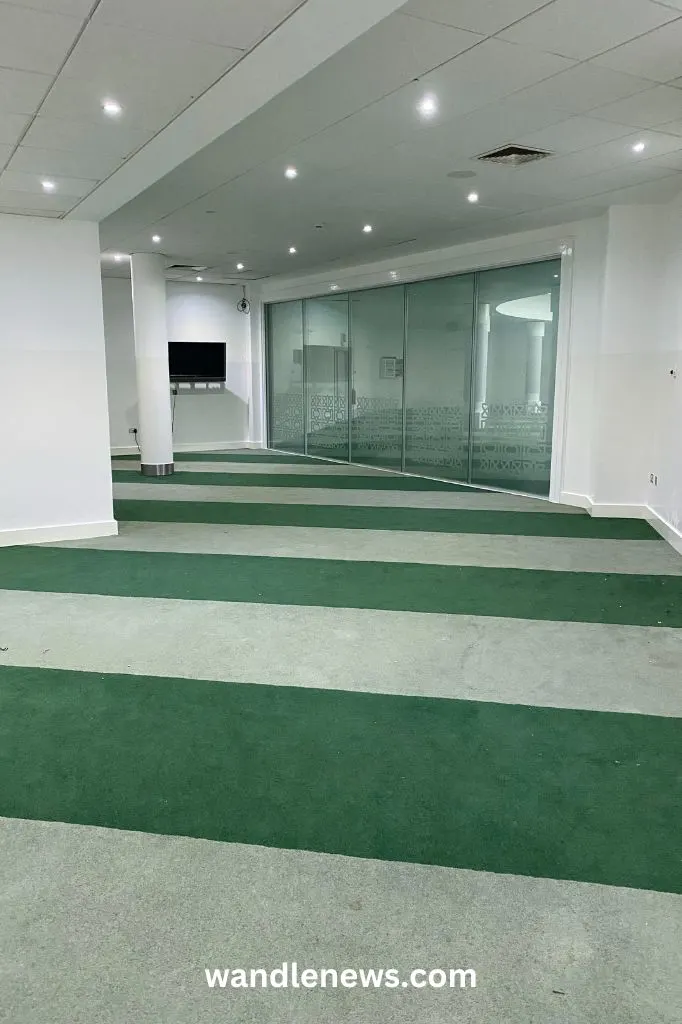
Islamic Bookshop
There is an Islamic bookshop in the mosque complex which is open to members of the public. The shop sells Islamic jewellery, perfume, books, and children’s educational materials.

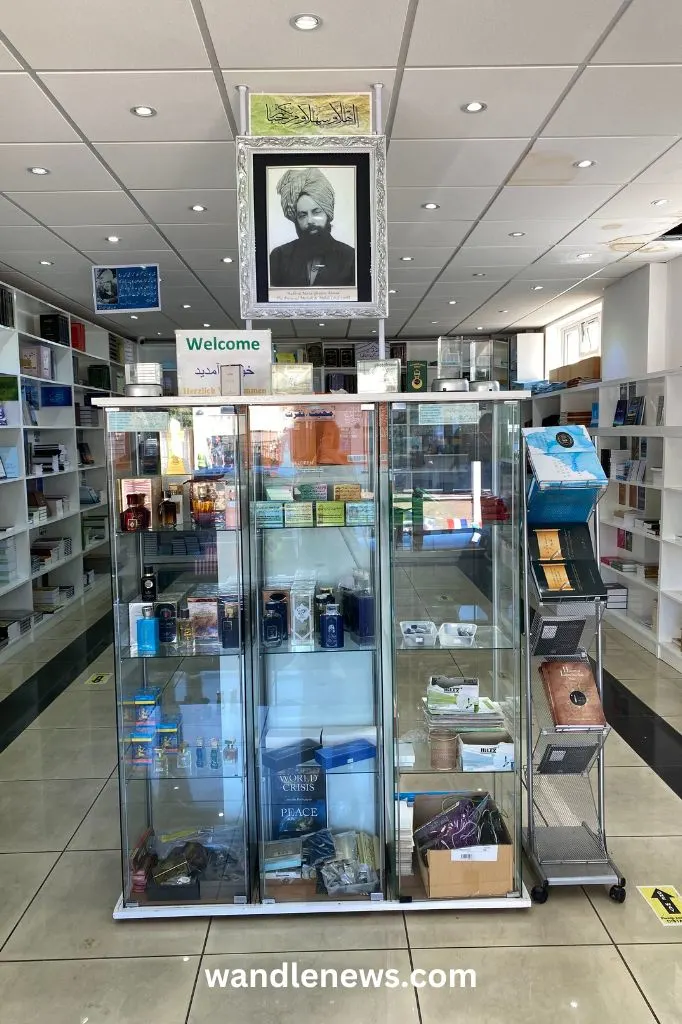
About the Ahmadiyya Community
Baitul Futuh mosque is owned by the Ahmadiyya Muslim Community. They also have two other mosques in south London: Baitul Ehsan in Mitcham, and the Fazl Mosque in Southfields, which was the first purpose-built mosque in London.
Ahmadiyya Muslims believe that the movement’s founder, Mirza Ghulam Ahmad, was the promised messiah, that Muslims believe will appear towards the end times, and bring about peace.
Mirza Ghulam Ahmad stated that his mission was not to bring a new religious law or scripture, but rather to revive the peaceful teachings of Islam, as originally conveyed by the Prophet Muhammad.
Below is the photograph of Mirza Ghulam Ahmad, that is displayed in entrance hall of the mosque.
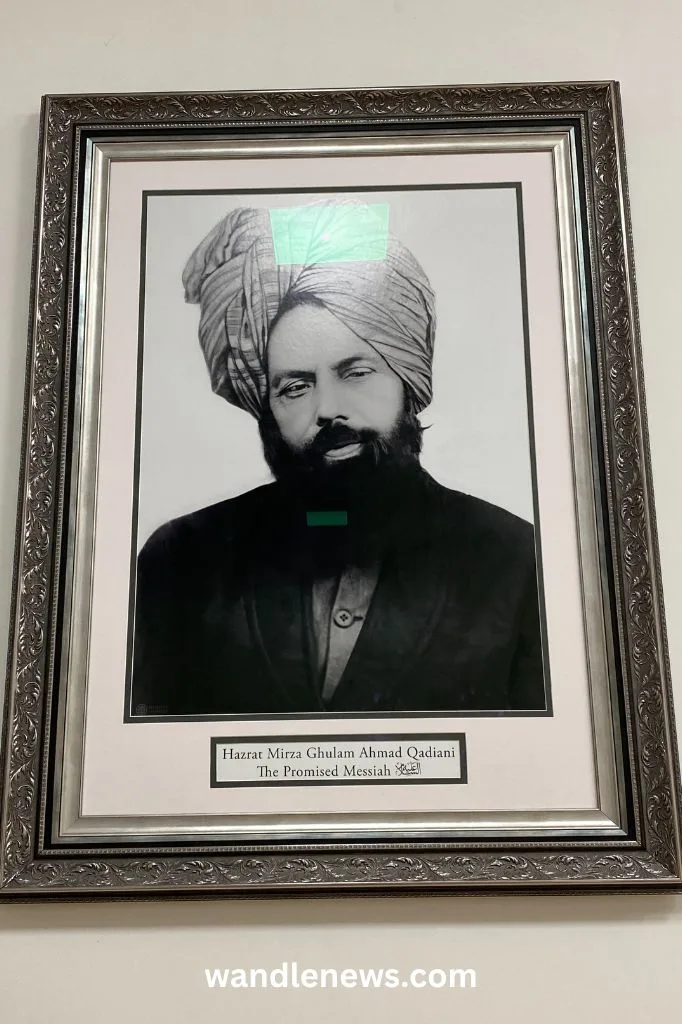
“Love for All, Hatred for None” is the motto and guiding principle of the Ahmadiyya Muslim Community. It encapsulates the community’s commitment to promoting love, tolerance, and understanding among people of all backgrounds, regardless of their religion, ethnicity, or nationality.
After Mirza Ghulam Ahmad passed away, the Ahmadiyya Community has been led by five successive spiritual leaders. The current, and fifth leader is Hazrat Mirza Masroor Ahmad. His official title is the Fifth Caliph of the Messiah, and he is based in the United Kingdom. You can see a picture of him below.

The £15 million that was raised to pay for the new mosque was sourced entirely from donations from within the Ahmadiyya Community. Within the mosque is a library and exhibition where you can learn more about Ahmadiyya beliefs.
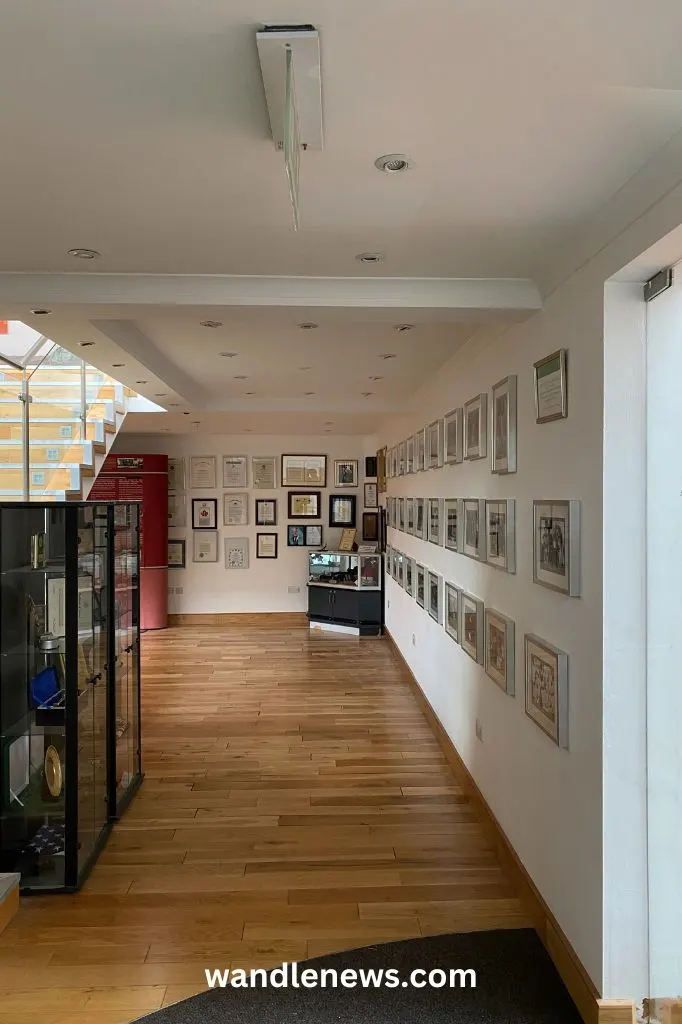
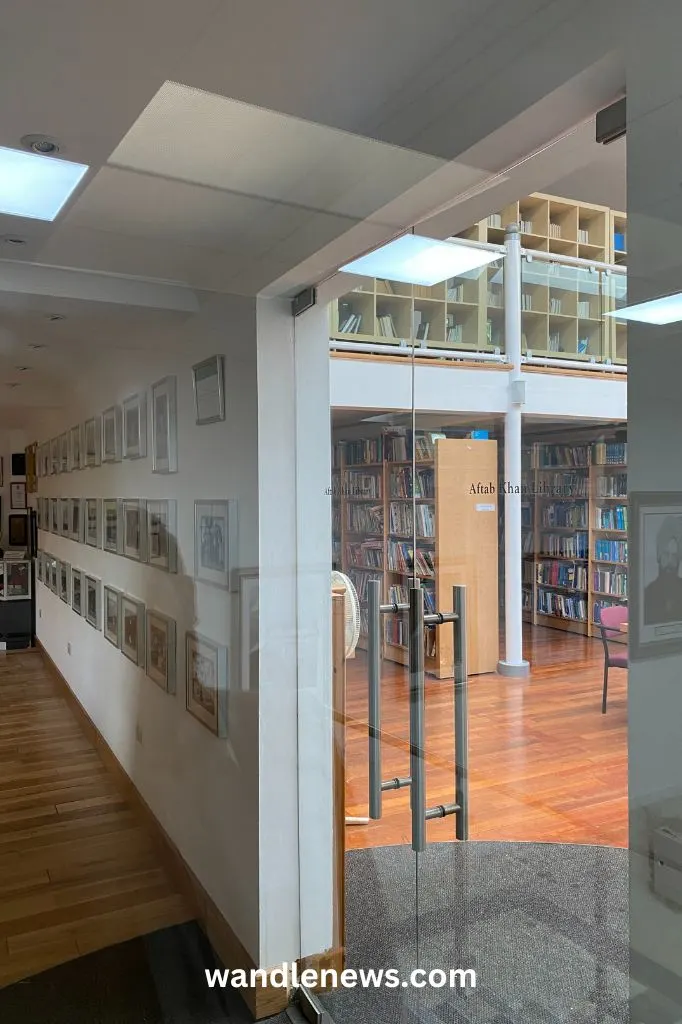
Location
The beautiful mosque is located in Morden in south London. The nearest stations are either Morden on the Northern Line, or Morden South Railway Station on the overground. The exact location of the mosque is shown on the map below.
This post was about Baitul Futuh, the Biggest Mosque in London
Thank you for reading my post about the biggest mosque in London. Baitul Futuh is also Britain’s largest mosque, and hosts lot of events for both Ahmadi Muslims, and the local community in Morden.
Check out my list of things to do in Merton
